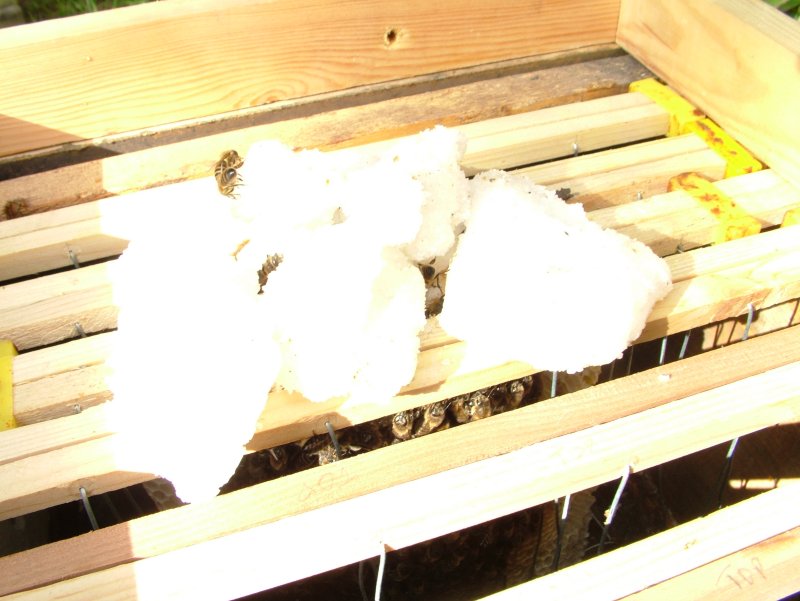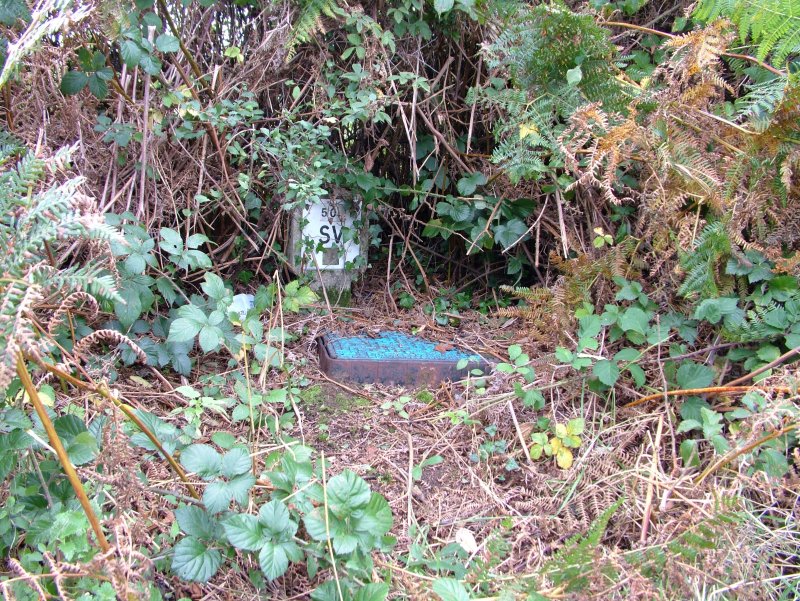
Cutout of a honey bee colony from a water company valve chamber
The valve chamber is situated in roadside vegetation against a hedge. A week previously, a company employee had come to close the valve and, on lifting the cover, found the colony. The cover was immediately closed and the local council environmental health department called in. They confirmed it was a honey bee colony and referred the water company to a local beekeeper who removes bee colonies.

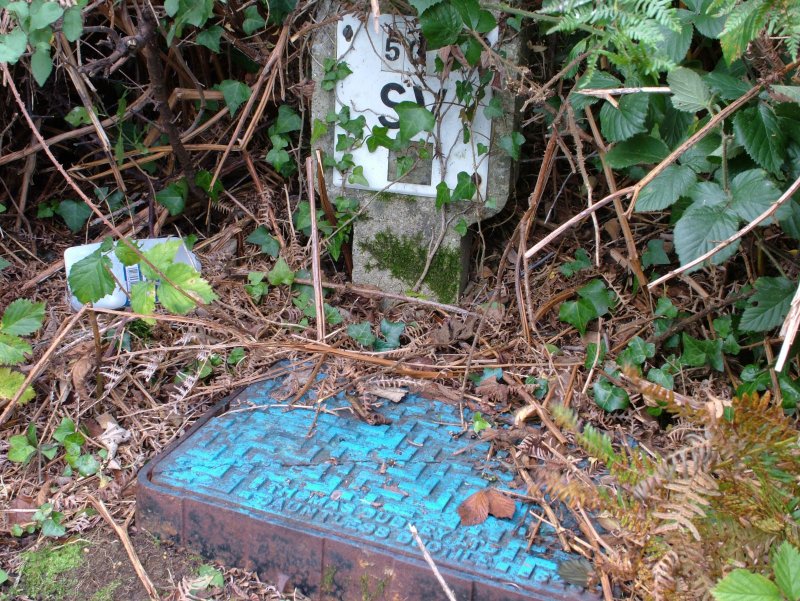
Below: the bees were entering through one of the crowbar holes in the cast iron cover.
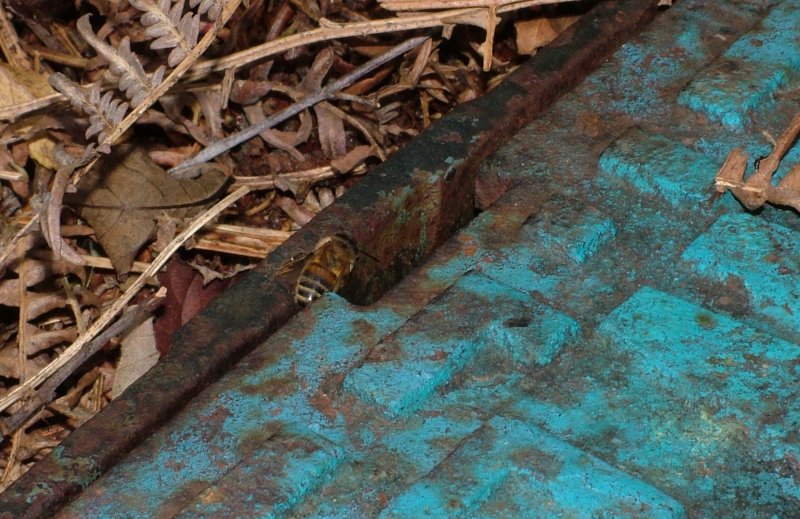
...and leaving (below).
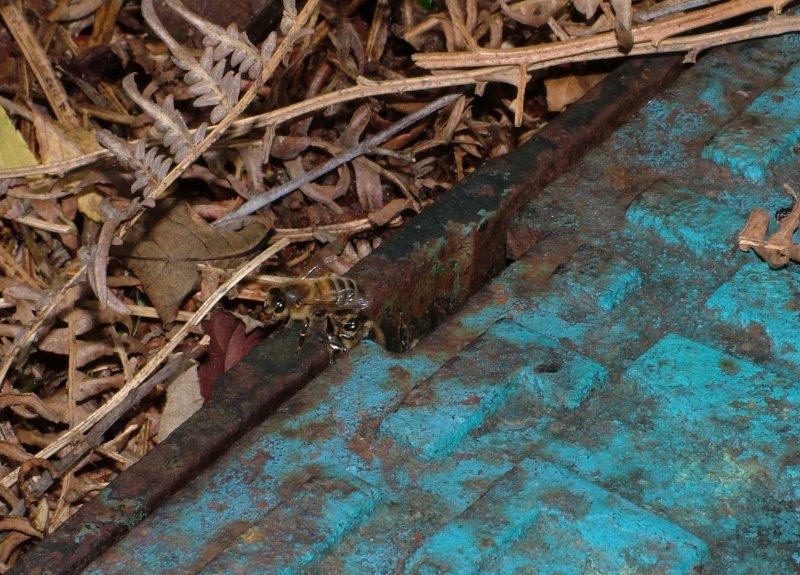
Below: on removing the cover, comb was found attached under the cover but with no bees (on the right in the picture below). Two combs were lying about six inches apart from one another in the bottom of the chamber, one with the bee cluster and the other with no bees but containing eggs, long dead larvae and capped brood (on the left in the picture below). Thes combs were inadvertently dislodged when the chamber was opened a week previous to this work.
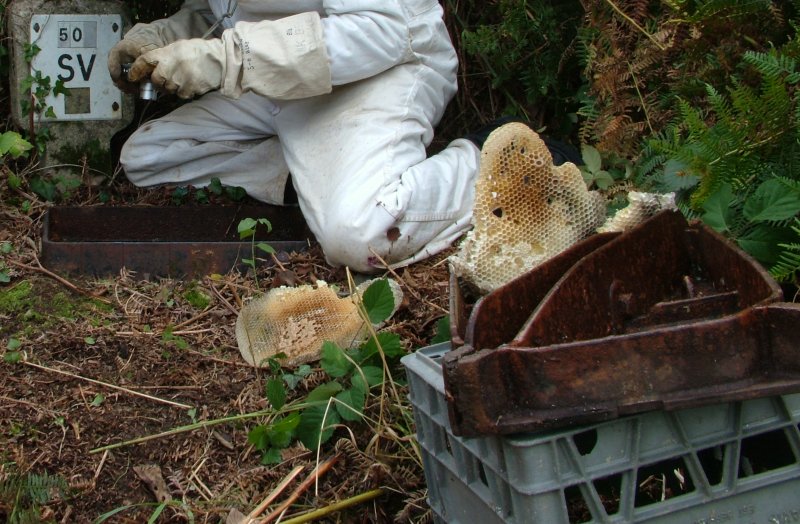
Below: closer view of combs. The patch of dead capped brood (buff coloured) can be seen on the comb on the left.
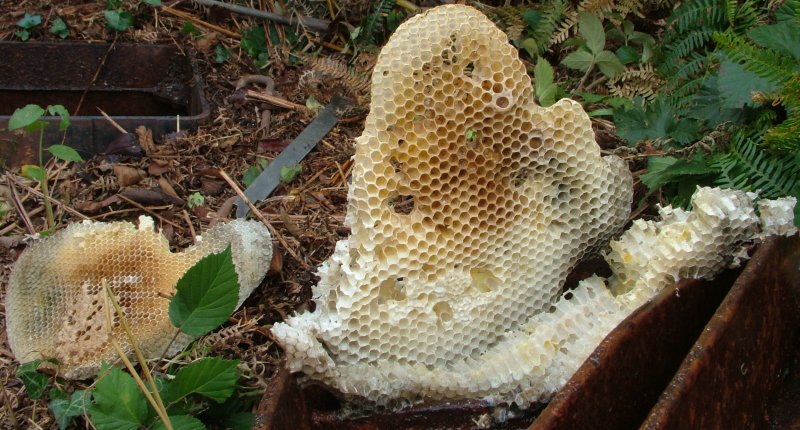
Below: the bee cluster on a comb that had fallen to the bottom of the valve chamber.
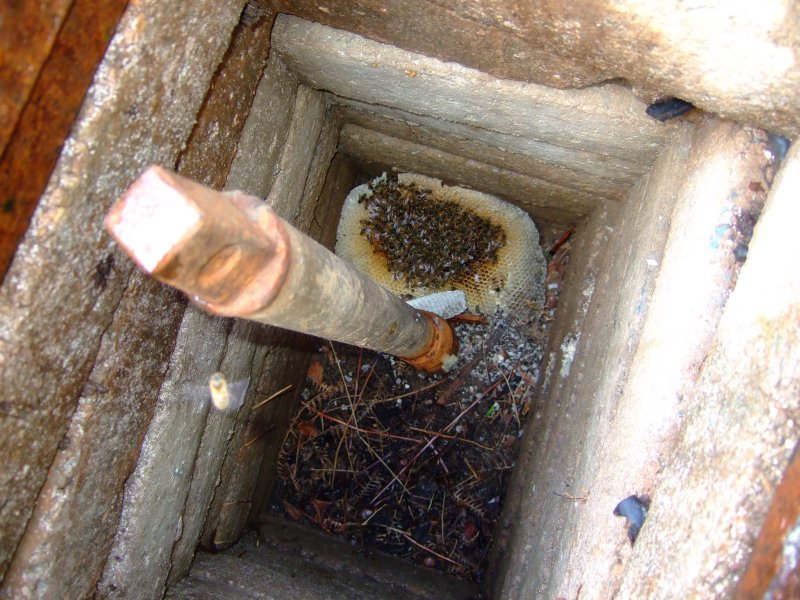
Below: the only viable comb in the cavity. The bees were calmly clustered on it showing that it had been lying there for some time. The bees were very docile throughout the entire operation.
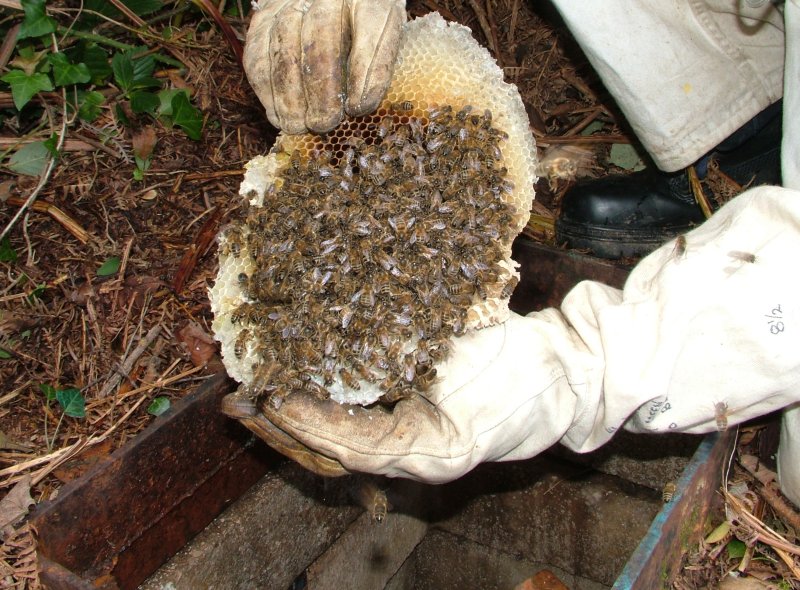
Below: brood comb held in a split frame.
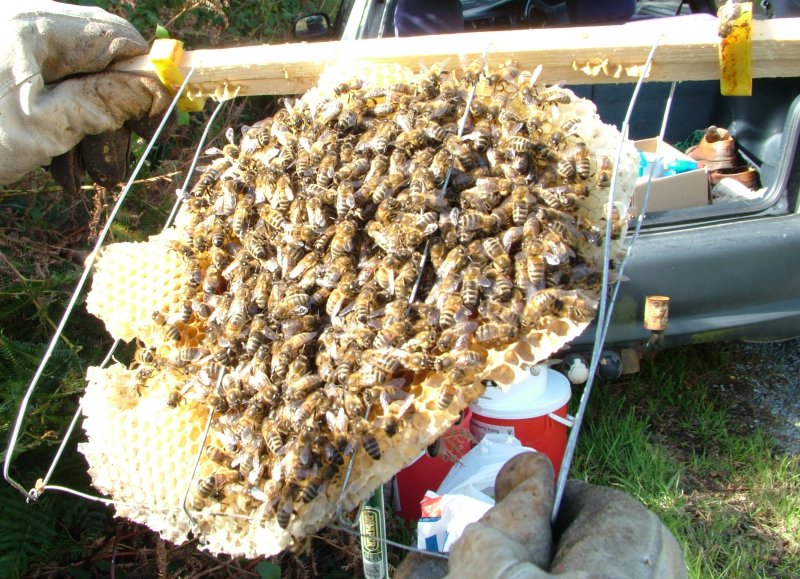
Below: the reverse side of the brood comb. No attempt was made to find the queen as the aim was to get the comb into the shelter of the hive as soon as possible to avoid it cooling down too much. The eggs found on the other comb are indicative that the queen was present at least up until the chamber lid was first lifted. There was some capped brood under the bee cluster on the viable comb. No attempt was made to search for eggs on this comb.
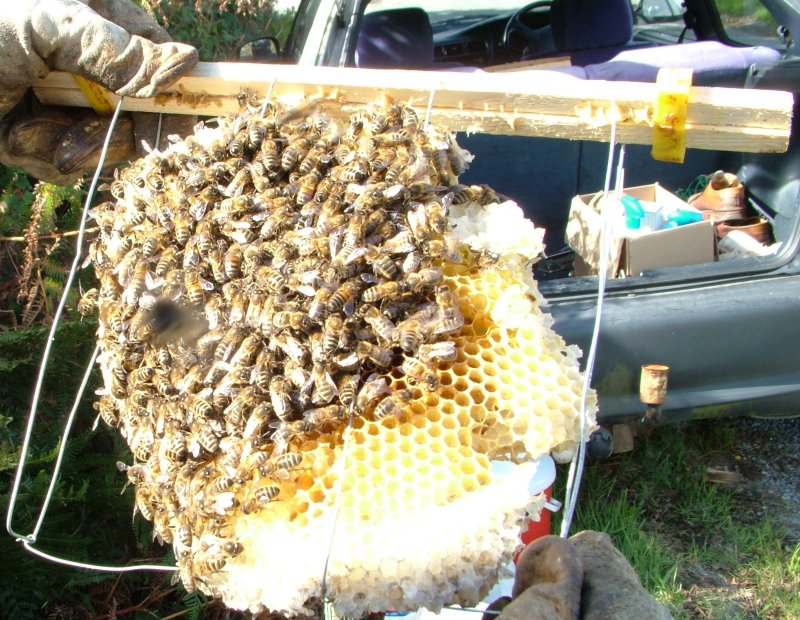
Below: brood comb being inserted into Warré hive. This version of the Warré hive is fitted with a window with shutters secured by rotating catches (see front of hive).
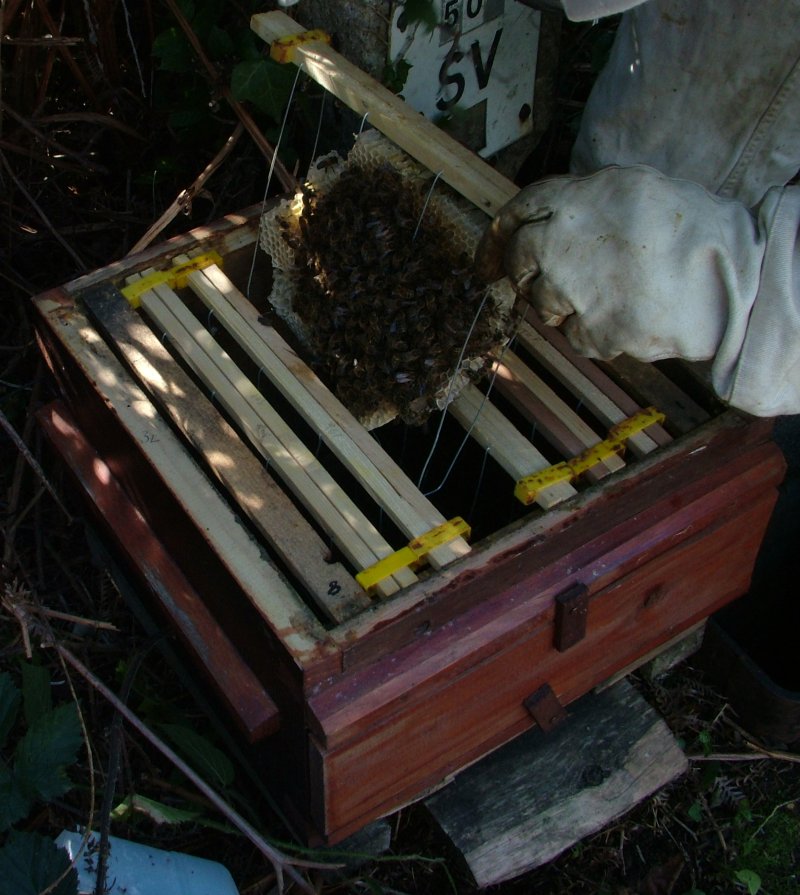
Below: the hive entrance was placed as close as possible to the former entrance by the rim of the valve chamber. This was to help the flying bees locate their colony by scent. The bees rapidly entered the hive. This is a further indication that it is likely to be 'queen right'.
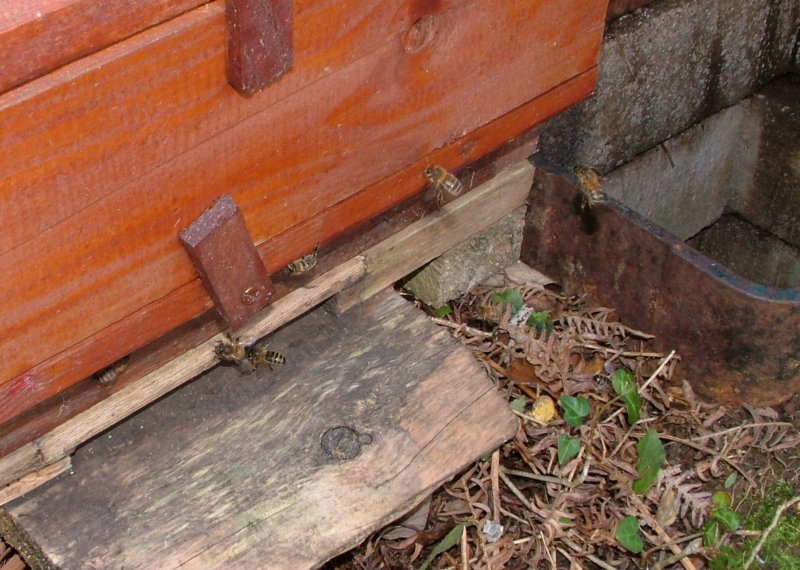
Below: after a short while bees were seen fanning at the hive entrance. The characteristic posture shows especially with the bee on the right. A gland is exposed in the rear tip of the abdomen and pheromone is emitted to attract other bees to 'home'. Disorientated bees remaining in the valve chamber were initially smoked out, and the remainder lifted out one by one until the chamber was free of bees.
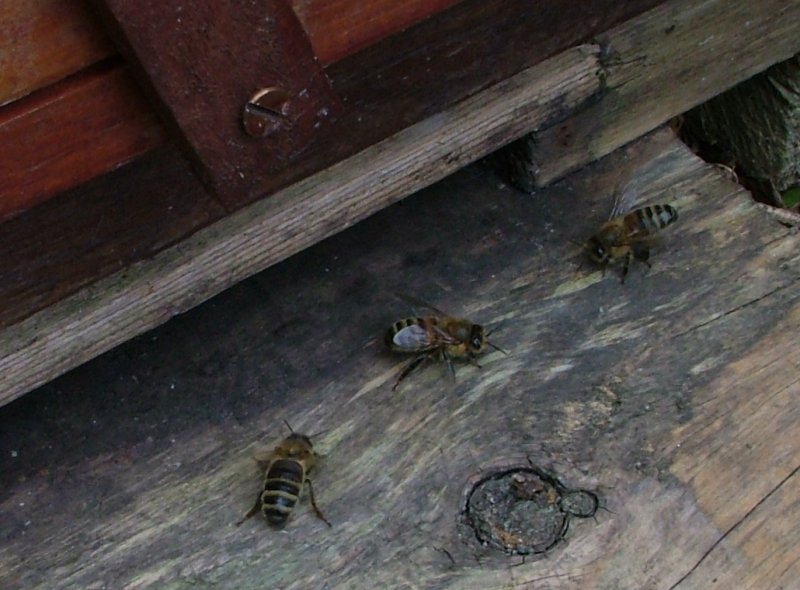
Below: the unused comb was cleaned from the valve chamber cover.
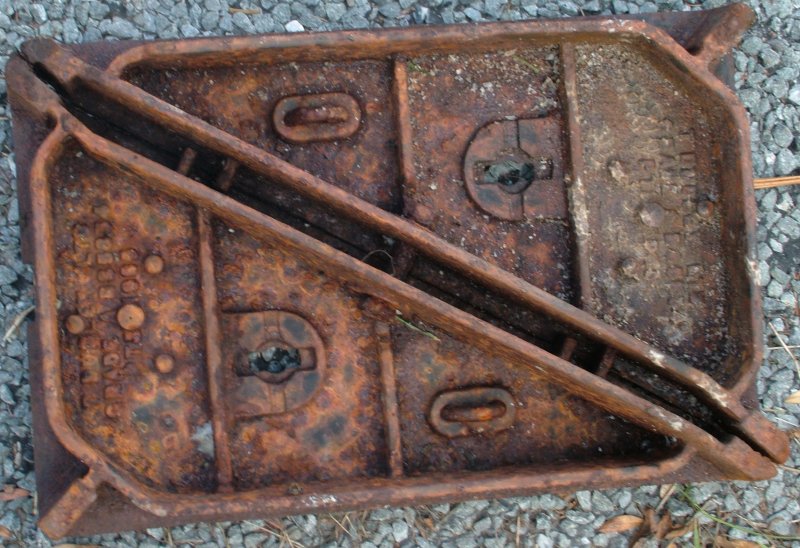
Below: the valve chamber cover was replaced and all apertures plugged with easily removable foam polyether (cushion foam) to stop any returning foragers from entering. It was a cool day (13C). There was hardly any forager traffic. None returned to the valve chamber while it was being sealed up and the equipment loaded for departure.
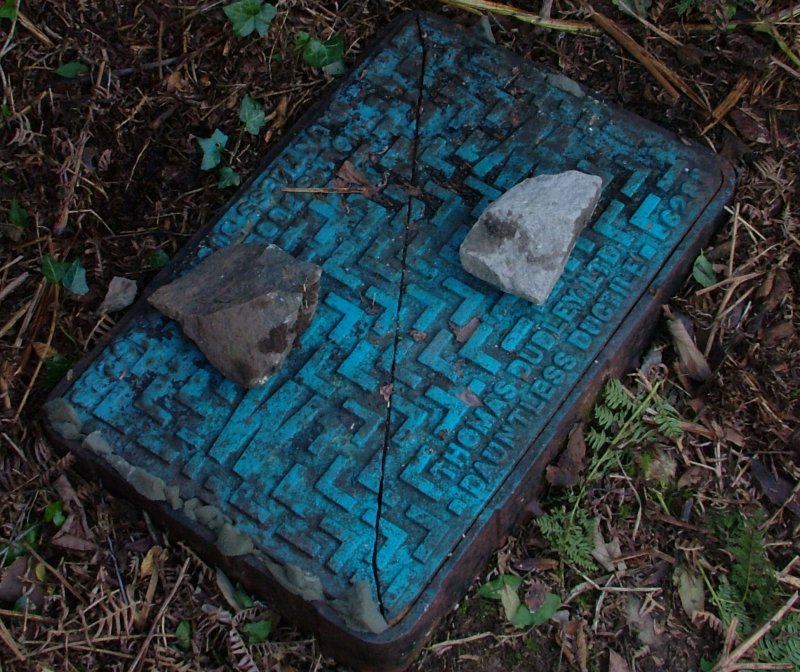
The hive was taken to an apiary. A wooden spacer was placed on top of the hive and chunks of candy placed on the frame bars as an immediate nourishment for the bees. This was covered with bubble-wrap to keep the heat in followed by the remainder of the usual Warré hive covering.
Below: bees immediately started to feed on the candy.
